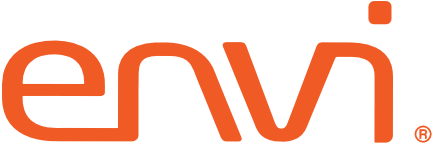The Envi team is committed to continually identifying and sharing best practices from our customers to help inform the healthcare community on supply chain automation. Each quarter, we recognize an organization demonstrating exceptional best practices in supply chain.
Congratulations to Foothills Surgery Center for winning this Best Practice Award. Foothills has demonstrated outstanding capabilities using Envi, moving from entirely manual to fully automated processes, and improving business outcomes by driving supply chain performance.
The Foothills Surgery Center Story
Foothills Surgery Center was managing supplies manually; members of the materials management team walked the center to find supplies and identify inventory levels, writing down item codes and on-hand quantities. Inventory areas weren’t well-labelled and items were often stored in various locations. If supply bins were empty, it was difficult to identify what was missing. “We needed to find ways to improve accuracy and free up time for my team,” said Loren Anderson, CMRP, Materials Manager. “Prior to Envi, we didn’t have a materials management system and our processes were slow and manual. We had no way to validate the accuracy of items and orders.”
Anderson and his team set goals to improve supply chain processes by focusing on two key areas:
1. Addressing inventory requirements – the team ensured all items in inventory were stored and labelled correctly, with accurate item codes, descriptions and par levels. “With storage space at a premium, we created a specific location for every item, then worked to right size all the bins, and label everything with barcode labels and min/max levels.”
2. Driving accuracy and automation – the team committed to accurately identifying all items in the item master and sending all orders through Envi, thus increasing ordering accuracy and efficiency, and improving data capture and visibility. “We also focused on proactively managing back orders. Together these steps helped us build greater supply chain resiliency.”
Best Practice Improvements
2020 has undoubtedly pressure tested the healthcare supply chain. Organizations have been challenged to maintain on-hand stock for even the most common items. “It’s become clear that visibility to all available inventory, wherever it may be located, and understanding lead times and back orders, is vitally important to overall supply chain health,” said Anderson. “We have to continue managing with a just in time inventory approach and carefully manage our resources. I run a back order report every week and can follow-up on what’s overdue, or identify areas where I may need to source an alternate vendor.”
The team at Foothills has leveraged powerful Envi reporting tools for data analysis. “We constantly use our data to illuminate areas of potential improvement with information such as categorical spend, spend by vendor, and rep-delivered versus stock spend,” said Anderson. “By identifying products with a classification hierarchy, we’re able to see where our money goes, and if we have categories where spend isn’t proportional to revenue, we can identify red flags.”
Foothills is recognizing improvements in labor through time savings and direct savings from on-contract purchasing. Anderson added, “The most important change for us has been having a real materials management system. It’s important to our supply chain processes, and leveraging the full functionality is key. I know there will always be more ways for us to leverage the system and the data. The overall supply chain is pretty fragile and improving the way we manage our inventory – and building more visibility to supplies – will be important for success in the future.”
Summary of Best Practices
- Ensuring all orders go through Envi, creating visibility to spend, enabling complete data capture, improving intelligence-based reporting
- Identifying price discrepancies on the front end, by ensuring correct contract prices are utilized in purchase orders and confirmed in PO Acknowledgements
- Receiving incoming supplies, matching POs to receiving and back order reports
- Setting up Envi alerts to identify overdue orders
- Managing back orders proactively through weekly back order reports; vendor lead time management; identification of alternative products
- Ensuring ongoing data accuracy by limiting who can access, add or edit
- Leveraging Envi reporting tools to create intelligence-based reporting, including overall spend, top 30 items, spend by vendor, rep-delivered items versus in-stock inventory
